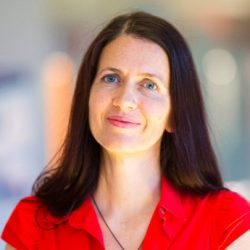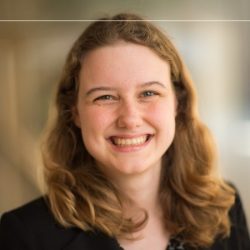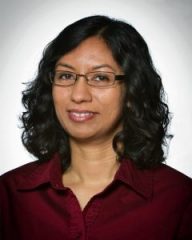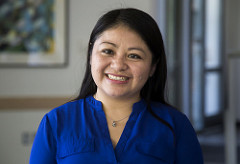Fall 2018 Section Conference
Imagine the Future: Developing Artificial Intelligence and Planning for AI Uses, Misuses, and Effects
Saturday, November 3 9:30AM – 2PM
Schoolcraft Community College in Livonia, MI
Registration is Open: https://events.vtools.ieee.org/m/177214
Our Sponsor
VisTaTech Center
KEYNOTE ADDRESS
The Ups and Downs of Word Embeddings
Rada Mihalcea and Laura Wendlandt
Electrical Engineering and Computer Science, University Of Michigan
Words are the central units of the languages we all speak. In a similar way, word representations are the core units of algorithms that we build to automatically process language. These representations form the foundation for many applications of natural language processing, ranging from question answering systems, to chat bots, search engines, or systems for machine translation. In this talk, we will take a deep dive into word embeddings — a popular way of representing words with the help of neural networks trained on very large collections of texts. In particular, we will address two aspects of word embeddings. First, we will take a close look at their stability, and show that even relatively high frequency words are often unstable. We will provide empirical evidence for how various factors contribute to the stability of word embeddings, and analyze the effects of stability on downstream tasks. Second, we will explore the relation between words and people and show how we can develop cross-cultural word representations to identify words with cultural influence – i.e., words that are used in significantly different ways by speakers from different cultures. Further, we will also show how we can effectively use information about the speakers of a word (i.e., their gender, culture) to build better word representations.
This is joint work with Carmen Banea, Aparna Garimella, and Jonathan K. Kummerfeld.
About the Keynote Speakers

Rada Mihalcea is a Professor in the Computer Science and Engineering department at the University of Michigan. Her research interests are in computational linguistics, with a focus on lexical semantics, multilingual natural language processing, and computational social sciences. She serves or has served on the editorial boards of the Journals of Computational Linguistics, Language Resources and Evaluations, Natural Language Engineering, Research in Language in Computation, IEEE Transactions on Affective Computing, and Transactions of the Association for Computational Linguistics. She was a program co-chair for the Conference of the Association for Computational Linguistics (2011) and the Conference on Empirical Methods in Natural Language Processing (2009), and a general chair for the Conference of the North American Chapter of the Association for Computational Linguistics (2015). She is the recipient of a National Science Foundation CAREER award (2008) and a Presidential Early Career Award for Scientists and Engineers awarded by President Obama (2009). In 2013, she was made an honorary citizen of her hometown of Cluj-Napoca, Romania.

Laura Wendlandt is a PhD candidate in Computer Science and Engineering at the University of Michigan, working with Dr. Rada Mihalcea. Her research interests include natural language processing and machine learning. She is currently serving as co-chair for the Student Research Workshop at the 2019 Annual Conference of the North American Chapter of the Association for Computational Linguistics, as well as co-chair for a2-dlearn, Ann Arbor’s annual deep learning symposium.
With increases in computing power that far exceed even most recent predictions, artificial intelligence quickly moved from the stuff of science fiction and into every aspect of our lives. To discuss exciting developments and various thorny issues surrounding AI, we chose it to be the topic of this year’s IEEE SEM Fall Conference that will be held at Schoolcraft Community College in Livonia, MI. We expect to look at what prompted acceleration in AI applications in both traditional and service industries, status of these developments, ethical and privacy issues surrounding AI, and much more.
SPEAKER LINEUP
Veronica Perez-Rosas, “Automatic Detection of Fake News”
Abstract The proliferation of misleading information in everyday access media outlets such as social media feeds, news blogs, and online newspapers have made it challenging to identify trustworthy news sources, thus increasing the need for computational tools able to provide insights into the reliability of online content. In this talk I will describe our recent efforts on the automatic identification of fake content in online news. First, I will discuss the challenges associated to building fake news datasets, including aspects related to data collection, annotation, and validation. Second, I will present present several exploratory analyses on the identification of linguistic cues in fake and legitimate news content and show how we can used them to build accurate fake news detectors. Further, I will show comparative analysis on the automatic and manual identification of fake news.
Bio Veronica Perez-Rosas is an Assistant Research Scientist in the Computer Science and Engineering department at the University of Michigan. She received her Ph.D. in Computer Science and Engineering from the University of North Texas in 2014. Her research interests include machine learning, natural language processing, computational linguistics, affect recognition, and multimodal analysis of human behavior. Her research focuses on developing computational methods to analyze, recognize, and predict human affective responses during social interactions. She has authored papers in leading conferences and journals in Natural Language Processing and Computational linguistics, and served as a program committee member for multiple international conferences in the same fields.
********************

Sharan Kalwani, “Symbiotic Relationship and Growth of Computing and Perceived Intelligence”
Abstract The growth of computing laws enabled many new applications, once thought of as perhaps near impossible or too far away. One of these is the sudden emergence of so-called “AI” applications, which was preceded by “Big Data”. In reality, the term “Artificial Intelligence” is a misnomer or, at least, an inaccurate representation of what is happening. As such, the public needs to know what the current excitement surrounding AI is all about and what it really entails. This talk will focus on the history, growth, enablement and applications of this new arena to paint a more accurate picture of what to expect from the emerging AI applications. We will also touch upon many other aspects of the emerging AI applications and ways to approach and consider them.
Bio Sharan Kalwani is currently working as a High Performance Computing (HPC) Specialist and Project Manager. His responsibilities include active participation in several initiatives, help users harness the power of HPC towards solving many of the worlds tough problems. Sharan brings a high degree of engineering, industrial business and strategic value perspective towards greater adoption of use of HPC in many facets of our lives. Sharan has a Masters degree in CS (Wayne State University) and Bachelors degree in Engineering (Delhi College of Engineering – University of Delhi). He has nearly 25+ years of experience in major areas of architecture, systems, development, device driver writing, networking, a myriad of several engineering design applications, technical & scientific frameworks, and compilers and libraries. He enjoys teaching, history, social media, public speaking and outreach. He is the 2017-18 Chair of Education Society and Vice-Chair of CS local chapters.
********************

Aisha Yousuf, “Building Blocks for a Successful Data Science Group”
Abstract With the promises of delivering many insights and improvements, along with advancements in hardware and data availability, artificial intelligence and data science have become hot topics and dubbed the “Sexiest career of the 21st Century”. Many companies start data science groups to leverage these technologies without having a thorough understanding of core pieces needed for such teams to succeed, resulting in little business value and high team member turnover rate. This talk will focus on first understanding what the much debated term “Data Scientist” means and what different roles and tools are needed to create a data science group. Building a data science group requires a culture change and a data centric business model. In addition, data science groups come in different varieties from more research focused to more product focused. This talk will focus on different technical and cultural changes and other key components that are needed for different data science groups to thrive.

Robert Neff, “AI in Autonomous Vehicles”
Abstract Is AI the answer for operational command of autonomous vehicles? If so, how will it be implemented? If not, what are the concerns and limitations that still need to be overcome? Bob’s multimedia presentation will offer a broad overview of AI as applied to autonomous vehicles. He will discuss developments and research that are exploring machine learning from recognizing preselected objects and drawing conclusions based on rules-based logic to machines that think like humans. We will have a thought-provoking discussion regarding ethics, machine/human interaction and machine interactions as automated vehicles join the network of roadways that exist today. Public acceptance of this technology will be a key factor. For example: Humans regard speed limits as guidance information, machines regard speed limits as absolute requirements. The autonomous vehicle traveling at the speed limit is upsetting to humans traveling 5 to 10 MPH faster. We will also touch on key technical capabilities needing development, some examples of disruptions to conventional business models, legal and ethical concerns and public awareness and acceptance of highly automated vehicles. Bob will conclude with a view of how our lives, our cities and our roadways will be changed by vehicles operating autonomously on our highways, in our cities and in our neighborhoods.
Bio Bob Neff is engaged in Sales and Marketing for companies involved in high technology products, projects and people. Sales and Marketing Insight is Bob’s strategic marketing company. Bob is a corporate officer in the Intrass Corporation, a startup company involved Vehicle-to-Vehicle (V2V) communications. Bob is past Chairman of the SAE V2V Vehicle Safety Subcommittee and is a current member of the SAE V2V Communications Standards Technical Committee that has written the interoperability protocol standard SAE J2735 for V2V communication and vehicle communication with the infrastructure (V2I). Bob is a retiree of Eaton Corporation where he held various technical, marketing and managerial positions, including working on collision warning, adaptive cruise control and blind spot warning using 24 GHz and 77GHz radar with the VORAD Division.
Event Schedule
| 9:30AM – 9:57AM | Registration / Breakfast / Networking / Posters |
| 9:57AM | Welcome & Opening Remarks: David Werden and Irina Sullivan (Conference Co-Chairs) |
| 10:00AM-10:30AM | Speaker #1: Veronica Perez-Rosas, “Automatic Detection of Fake News” |
| 10:30AM-11:00AM | Speaker #2: Sharan Kalwani, “Symbiotic Relationship and Growth of Computing and Perceived Intelligence” |
| 11:00AM- 11:30AM | Speaker #3: Aisha Yousuf, “Building Blocks for a Successful Data Science Group” |
| 11:30AM-12:00PM | Speaker #4: Bob Neff, “AI in Autonomous Vehicles” |
| 12:00PM- 1:00PM | Lunch |
| 12:30PM- 1:00PM | SEM Leadership & Volunteer Thanks |
| 1:00PM – 2:00PM | Conference Keynote Address: Rada Mihalcea and Laura Wendlandt |
| 2:00PM | Closing Remarks: David Werden and Irina Sullivan (Conference Co-Chairs) |


